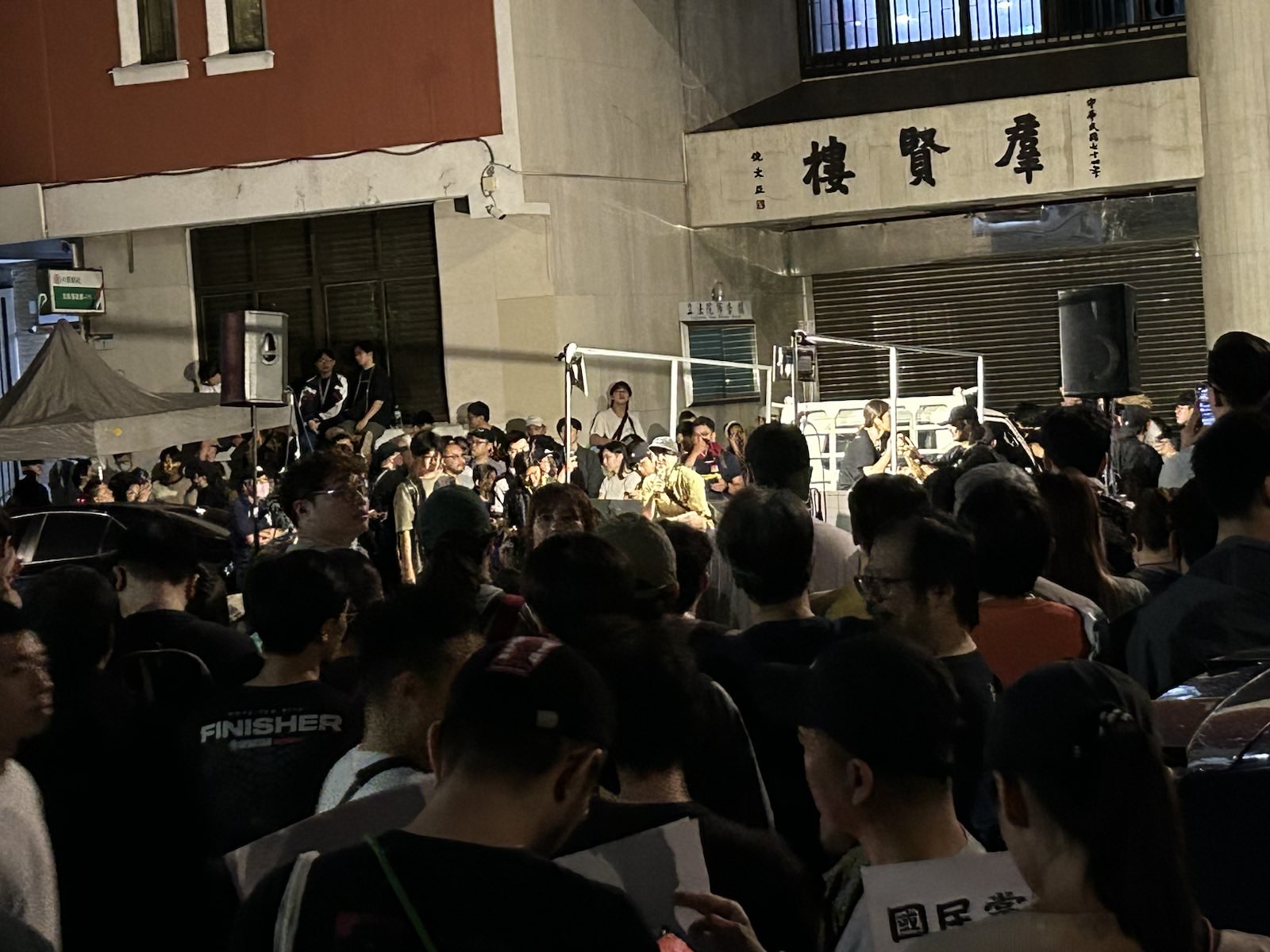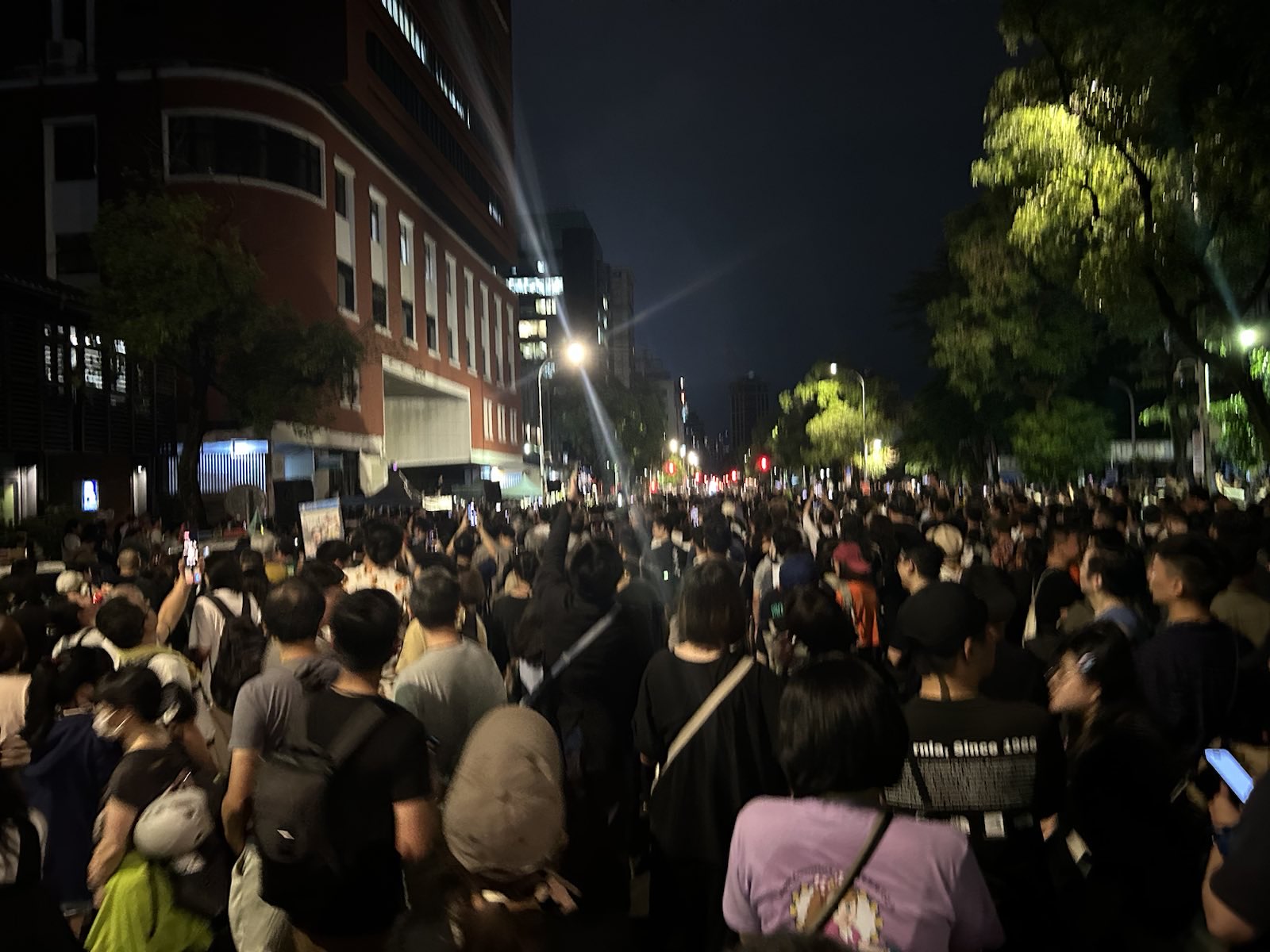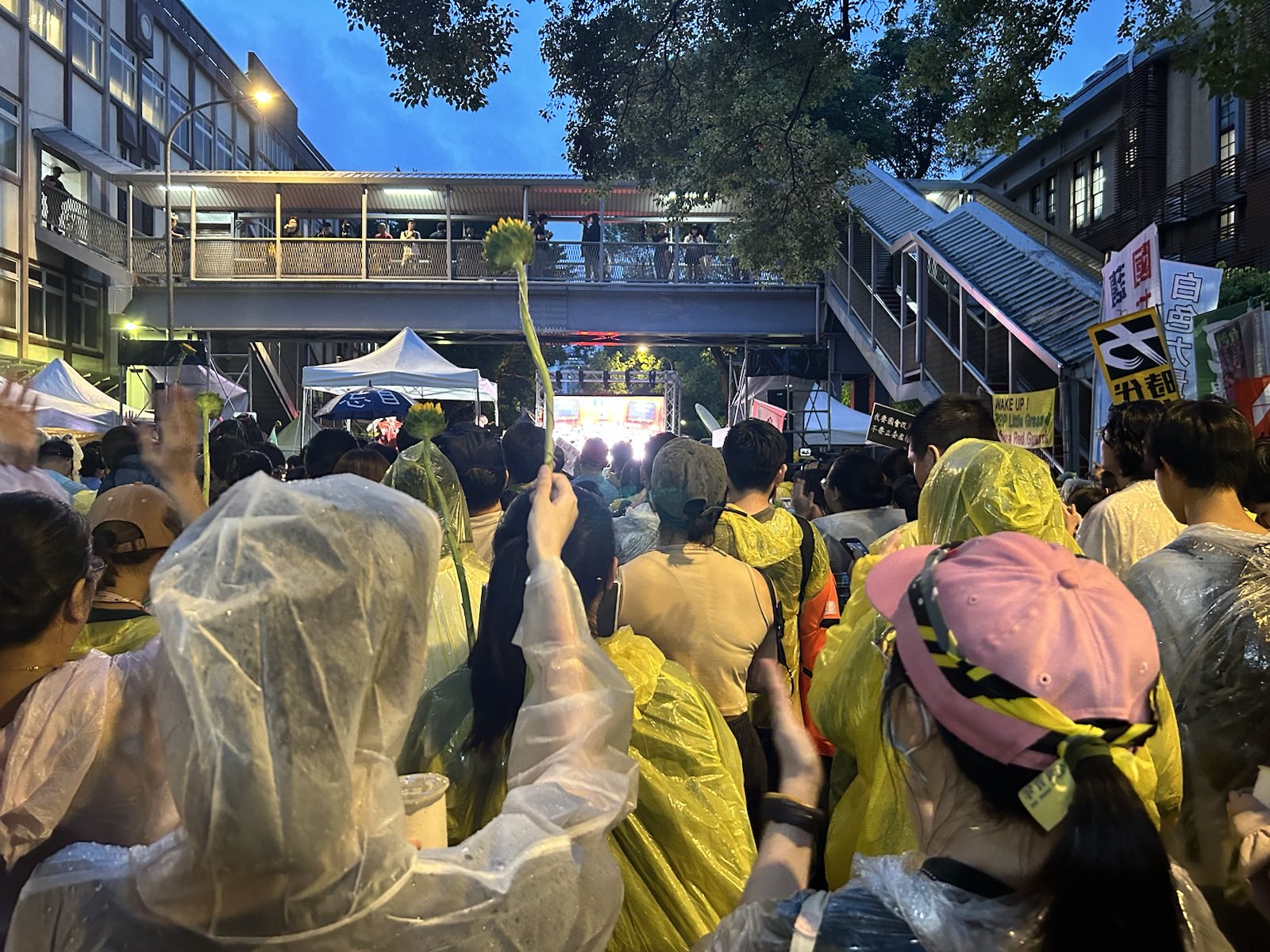by Brian Hioe
語言:
English
Photo Credit: Brian Hioe
AT ITS PEAK, the demonstration that took place outside of the Legislative Yuan yesterday against attempts by the KMT to expand legislative power drew 30,000 individuals. This occurred despite drizzles in the afternoon and heavy rain during the early evening.
The withdrawal from the legislature took place just after midnight, with the end of the legislative session at 12 AM. Although more than fifty votes were held on the bill and more than fifty lines advanced to the second reading, the next dates the bill will be discussed are May 24th and May 28th, with a potential final review on May 31st if it clears all of these measures.
 Photo credit: Brian Hioe
Photo credit: Brian Hioe
The withdrawal was quick and orderly. At the same time, demonstrators were called on return on Friday to again apply pressure to the legislators inside of the Legislative Yuan, even if this would require taking the day from school or work off–protecting Taiwanese democracy was framed as of greater importance. Otherwise, those unable to make it to the Legislative Yuan were called on to call the local offices of their legislators, as a means of exerting pressure.
Indeed, apart from pressuring the KMT, this can also be a strategy aimed at pressuring the DPP. Namely, the DPP itself did not seem terribly concerned about the pan-Blue camp’s legislative changes in spite of how wide-reaching this would make the pan-Blue camp’s powers. This changed, with the spontaneous protest that took place on Friday calling attention to the fact that members of the public were alarmed by the issue.
 Photo credit: Brian Hioe
Photo credit: Brian Hioe
In some ways, the present crisis is due to that the DPP did not sound the alarm about the legal changes earlier. However, showing the DPP that voters care about the issue can incentivize DPP politicians to take further action on the issue–if only to win their votes–whether this is in terms of calls to their offices or through public support from the crowd outside.
Despite the framing of the movement as potentially being a second Sunflower Movement, the movement is unlikely to develop in the direction of an occupation-style movement. The Sunflower Movement could only maintain a 23-day occupation because of splits in the KMT between then-majority speaker Wang Jinpyng and then-President Ma Ying-jeou. As Wang was the leader of the comparatively pro-localization “Taiwanese faction” of the KMT and otherwise at odds politically with Ma, Wang prevented police from intervening in the legislature–if not out of sympathy, simply to use students as political leverage against Ma.
 Photo credit: Brian Hioe
Photo credit: Brian Hioe
By contrast, Han Kuo-yu or Fu Kun-chi are unlikely to have such restraint against students. And, as with during the Sunflower Movement, Taipei is again ruled by a KMT mayor, Chiang Wan-an, meaning that the Taipei police could potentially be deployed. One is unlikely to see conflicting imperatives between the central and Taipei city government in terms of police they have authority over in a way that benefits protesters–after all, even when Ko Wen-je was Taipei mayor and still sympathetic to pan-Green youth protesters before his defection to the pan-Blue camp, he was unable to prevent police actions against the 2015 student occupiers of the Ministry of Education.
As such, in its initial stages, one does not expect an occupation-style movement unless there is severe escalation because of some angering incident, possibly involving violence in the legislature or other causes. Rather, one will see repeated days in which protests converge on the legislature in the morning, and then depart at midnight when legislative sessions end. This will change, however, as key deadlines for passing the amendments approach, or if the amendments do in fact pass into law.
 Photo credit: Brian Hioe
Photo credit: Brian Hioe
That is, one expects the odds of more dramatic direct action to increase as time goes on. And though an occupation is possible, such as on the streets outside of the legislature, occupying the legislature itself is unlikely. This is because the unique set of conditions that allowed for the Sunflower Movement to maintain a month-long occupation, involving a split in the KMT, do not currently exist.
It is many of the same civil society groups that played key roles in the Sunflower Movement that are steering the course of the current movement. As such, one expects them to apply many of the lessons of the movement to the present, or perhaps their assessment of the best present course of action will be influenced by the experience of the Sunflower Movement. But it may also require creative strategies to deal with the differing conditions of the present.

